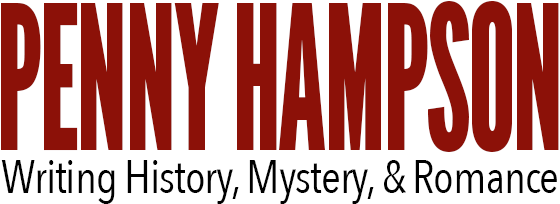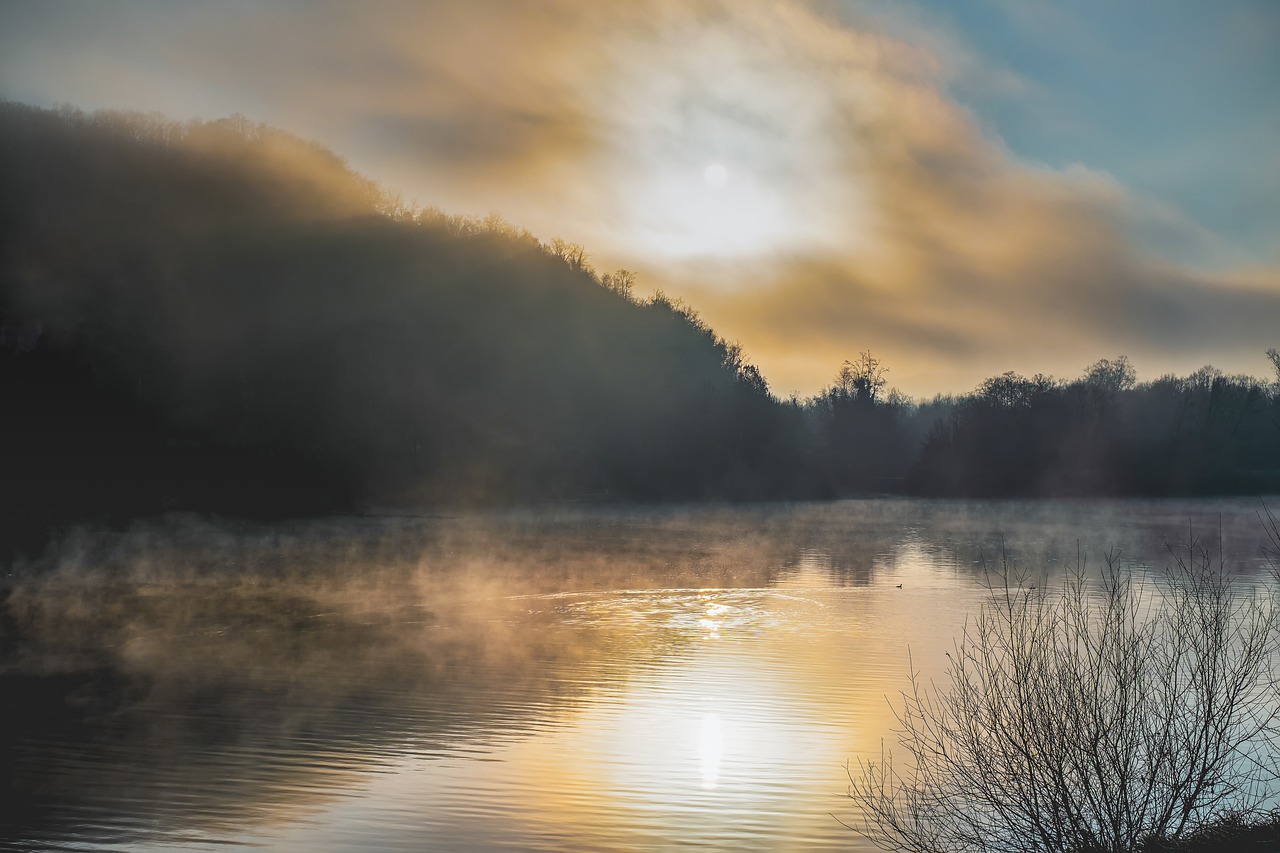Last week saw me on my travels again, this time to the historic Cotswold town of Tewkesbury, which lies at the confluence of the rivers Severn and Avon. It was the scene of a decisive battle in 1471, when the House of York defeated the House of Lancaster in the Battle of the Roses. But I didn’t go to see the battle site, I was more interested in exploring the wonderful Abbey, and the town centre with its array of listed historic buildings.

Tewkesbury is said to derive from the Saxon word ‘Theoc’, the name of a hermit who settled in the area in the 7th century; from Theoc it became Theocsbury, and thence Tewkesbury. At the time Theoc moved here, a monastery was established, although the present building was not begun until around 1087, under the auspices of Robert Fitzhamon and his wife Sybil de Mongomery. They did not live to see it finished however, but their daughter Mabel, and her husband Robert Fitzroy were present at the Abbey’s consecration in 1121.
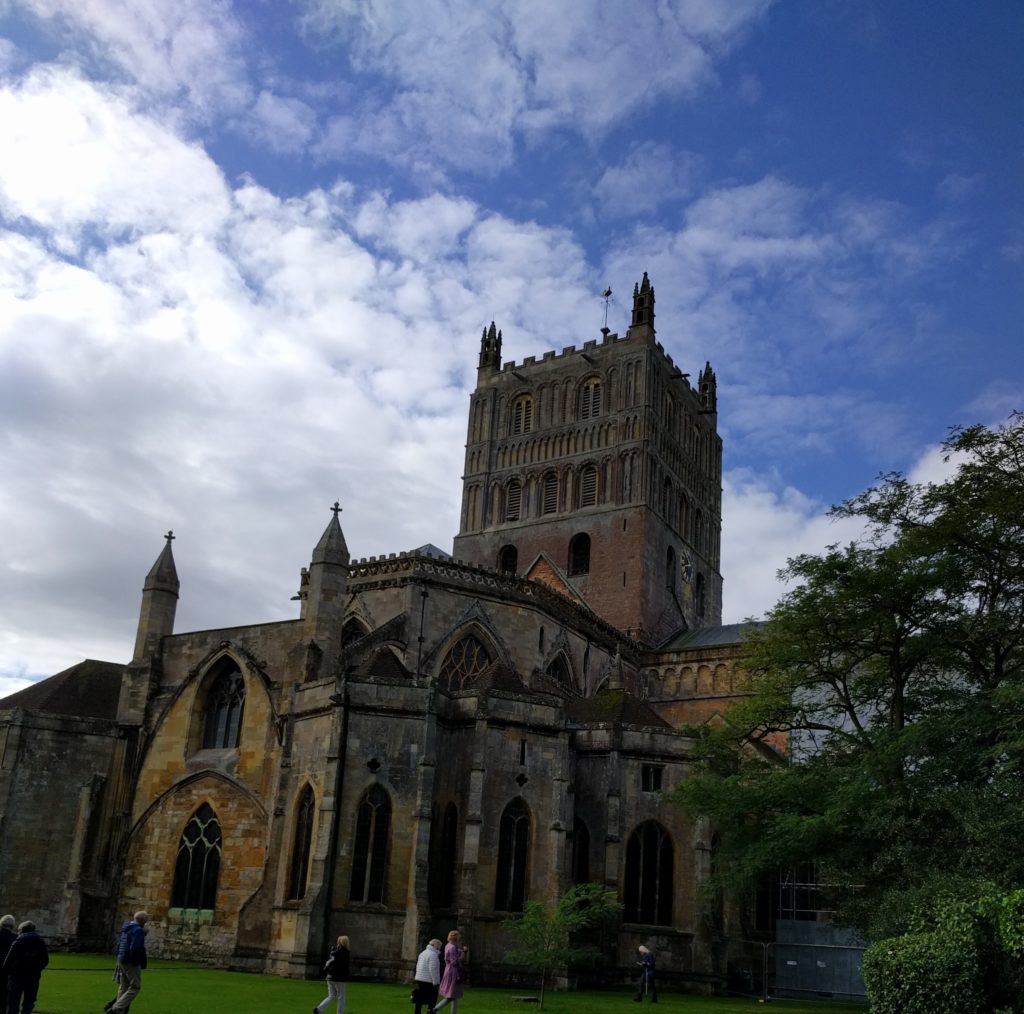
The Abbey is a wonderful example of Norman architecture, with the quire and the transepts said to be the earliest examples of a three-storeyed building in Europe.
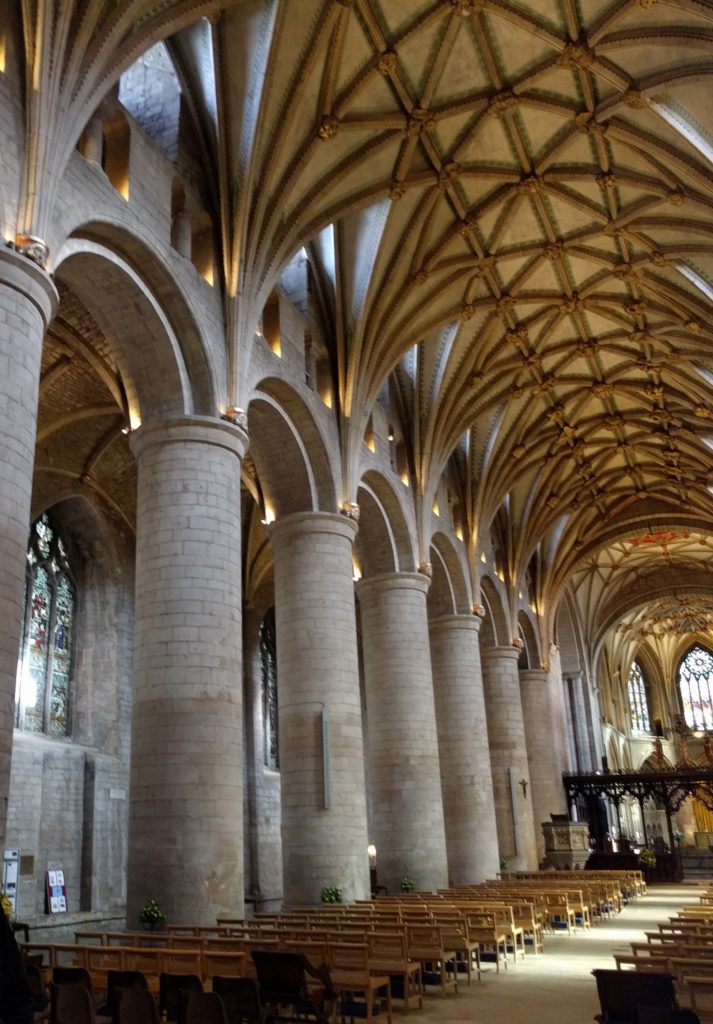

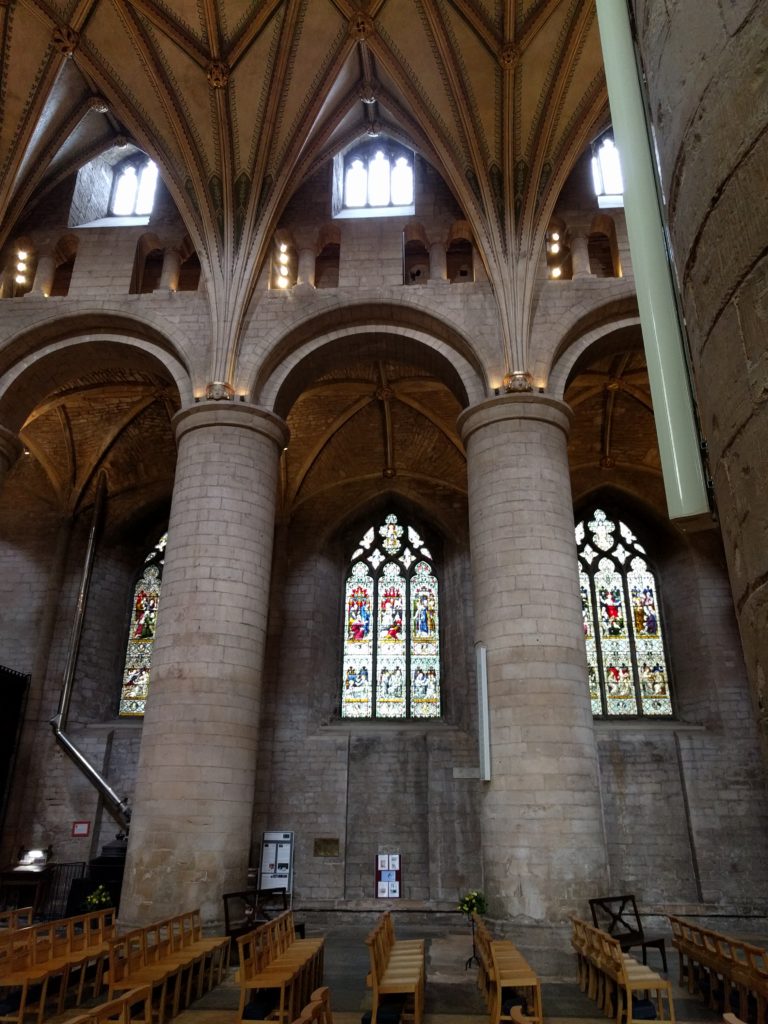

Doorway – note the original Norman doorway opening above the one in current use 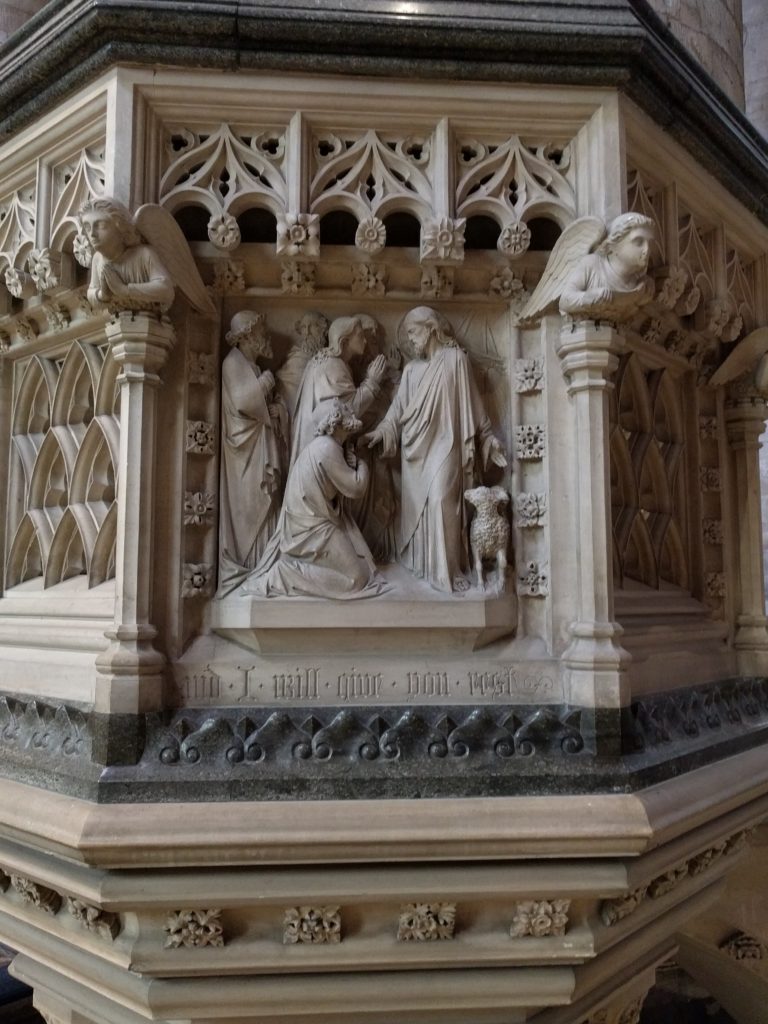
The pulpit
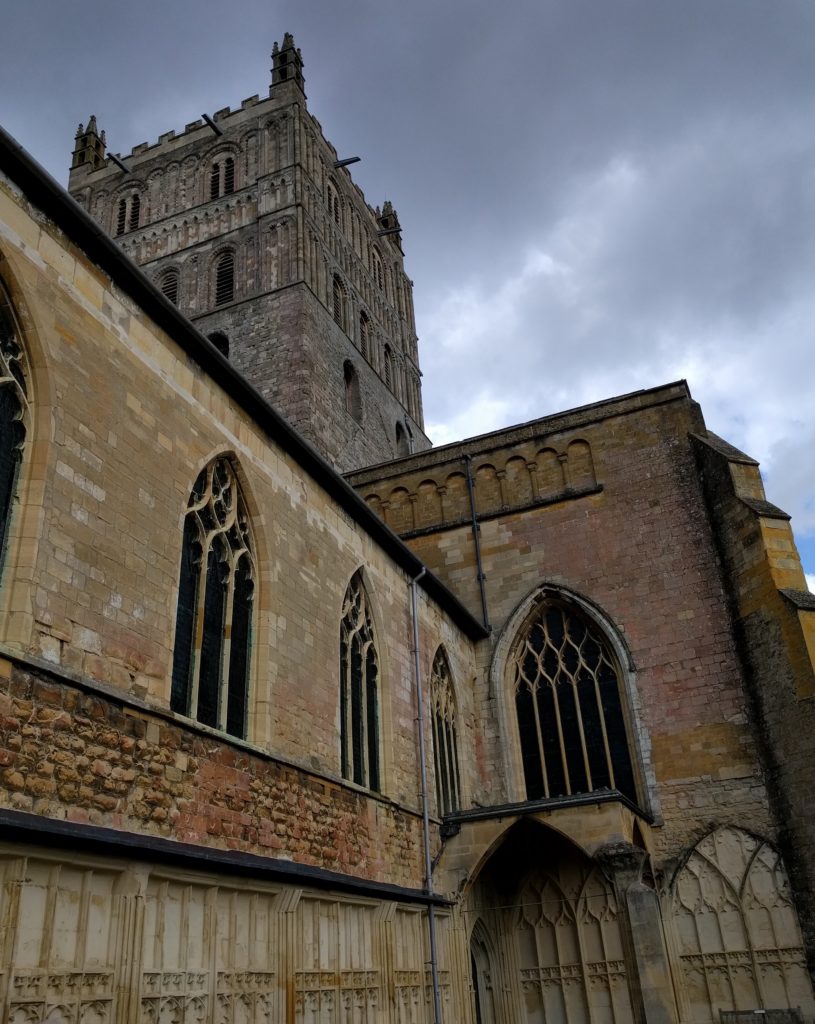
The Abbey’s 46 metre (148 feeet) tower, with its 14 metre (46 feet) square walls is considered to be the largest and finest Romanesque example in the world.
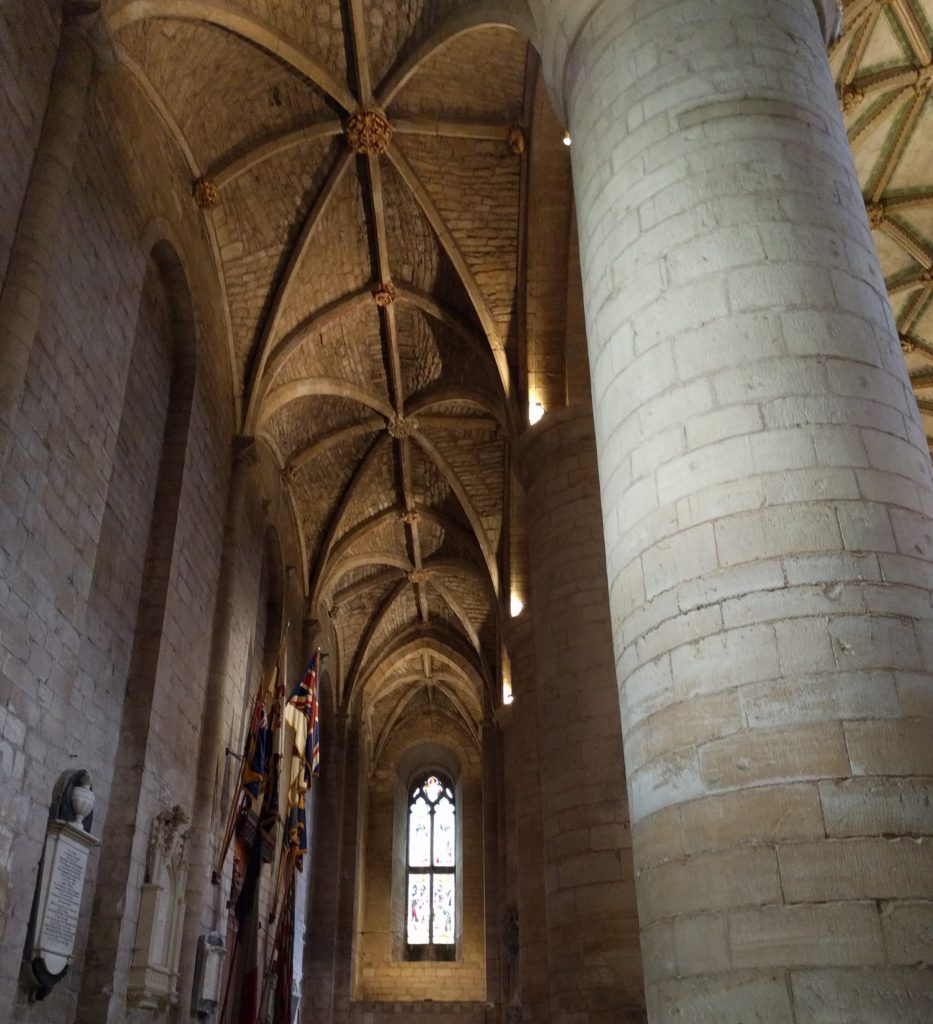
I hope you can see from my photos that the interior of the Abbey is equally impressive.
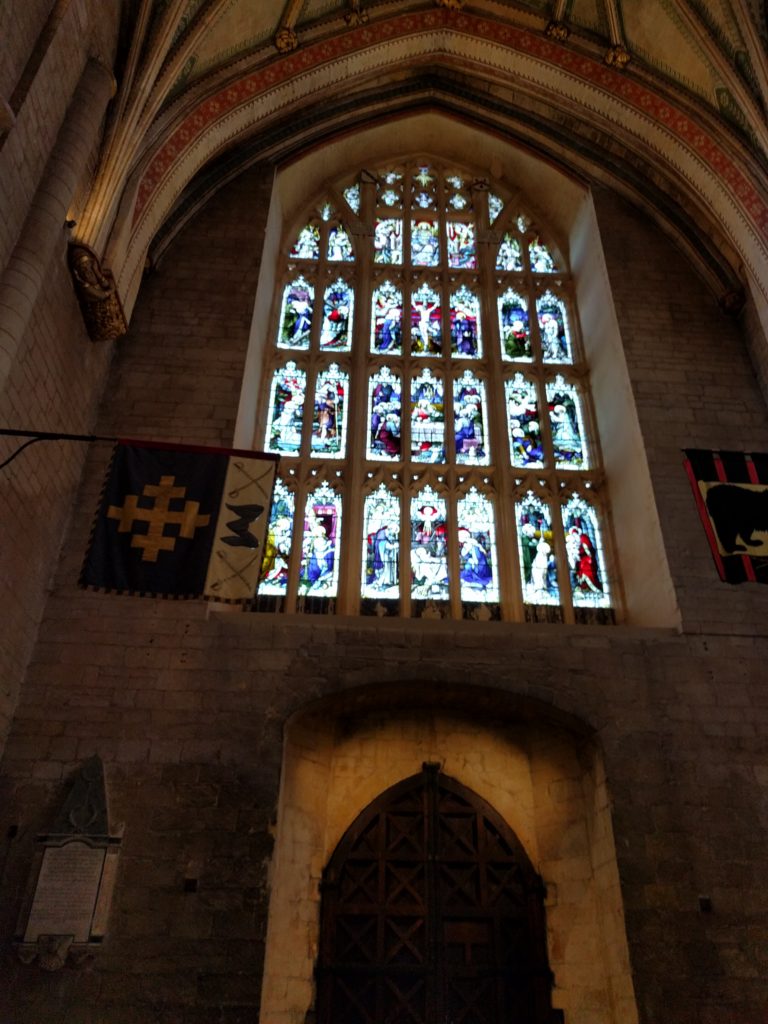
How did the Abbey survive the Reformation, when Henry VIII was intent on destroying monastic buildings and acquiring their wealth? Well, for that we have to thank the canny townspeople, who in 1540, purchased it for £453, the value of the lead on its roof and the metal in the bells. They intended it to become their parish church.
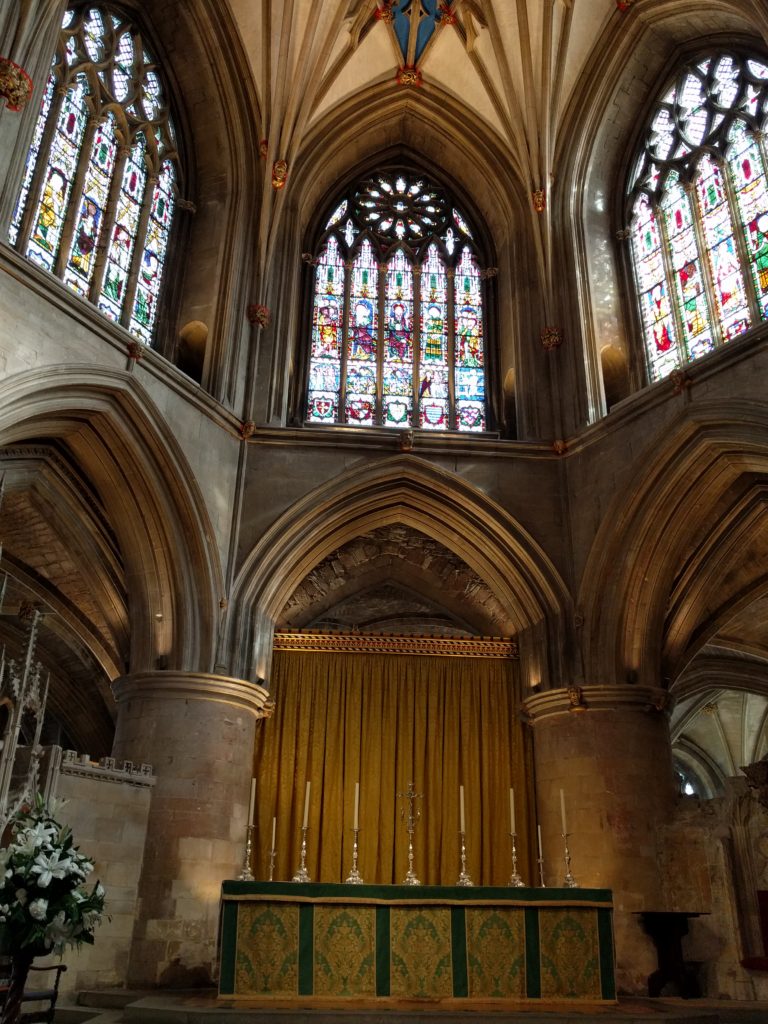

As I walked round, I admired the 14th century stained glass window above the high altar, and the marvellous stonework of the various medieval tombs and chantries.
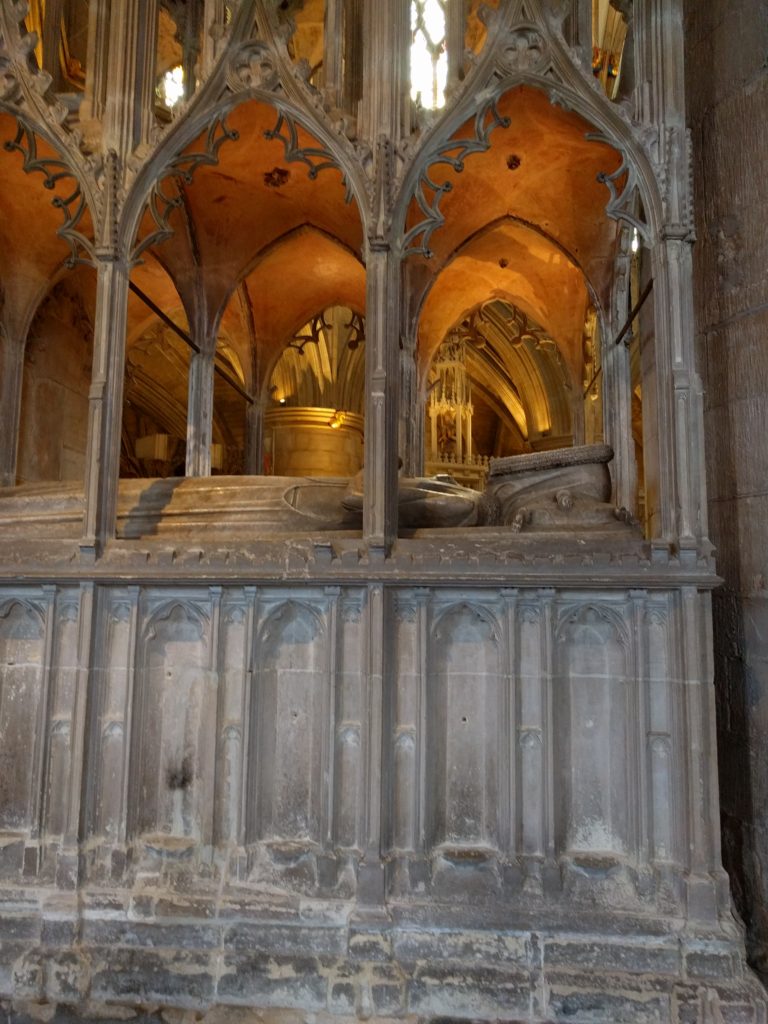
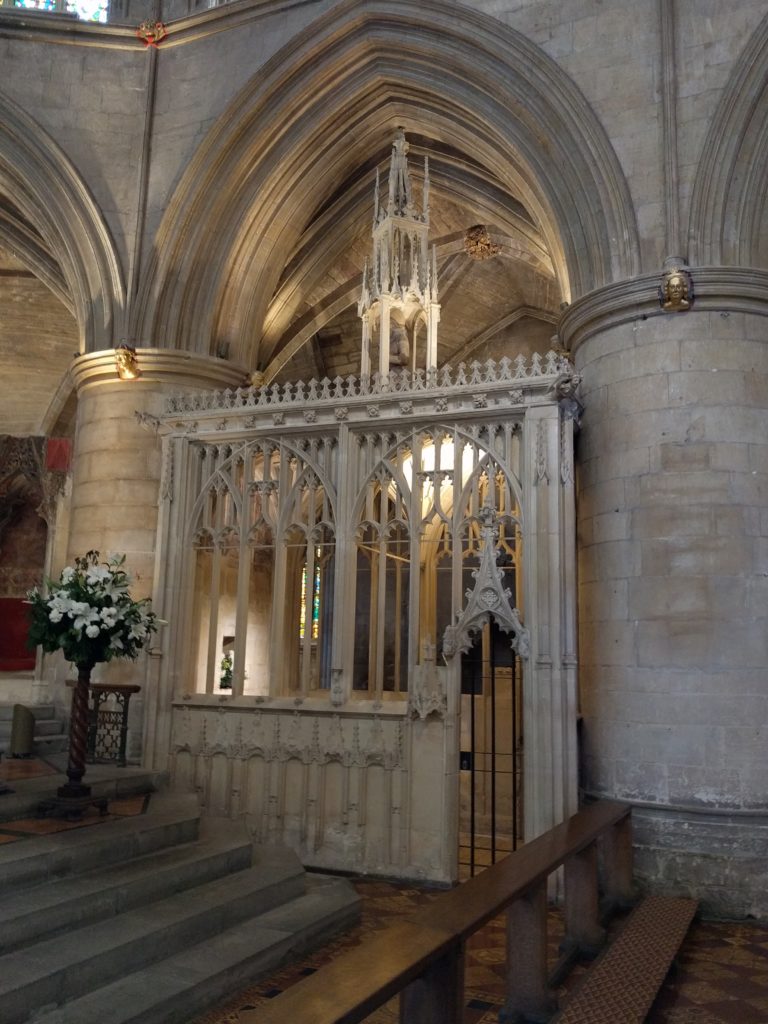
In the chapel of the Holy Trinity, which is the Chantry of Lord Edward Despenser, one can see the remains of 14th century wall paintings, and on the chantry roof is a unique kneeling wooden effigy of Lord Edward facing the High Altar.
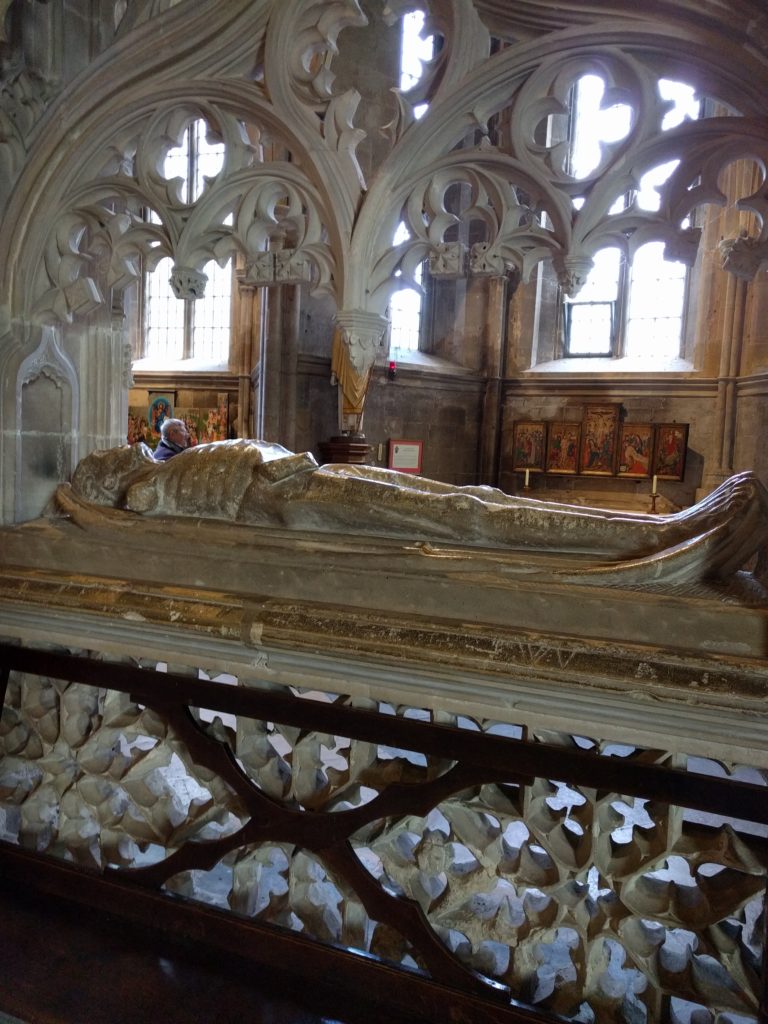
Another striking monument is the cadaver effigy on the tomb of John Wakeman, the last Abbot of Tewkesbury. His body however, is not in the Abbey, but in the nearby village of Forthampton.
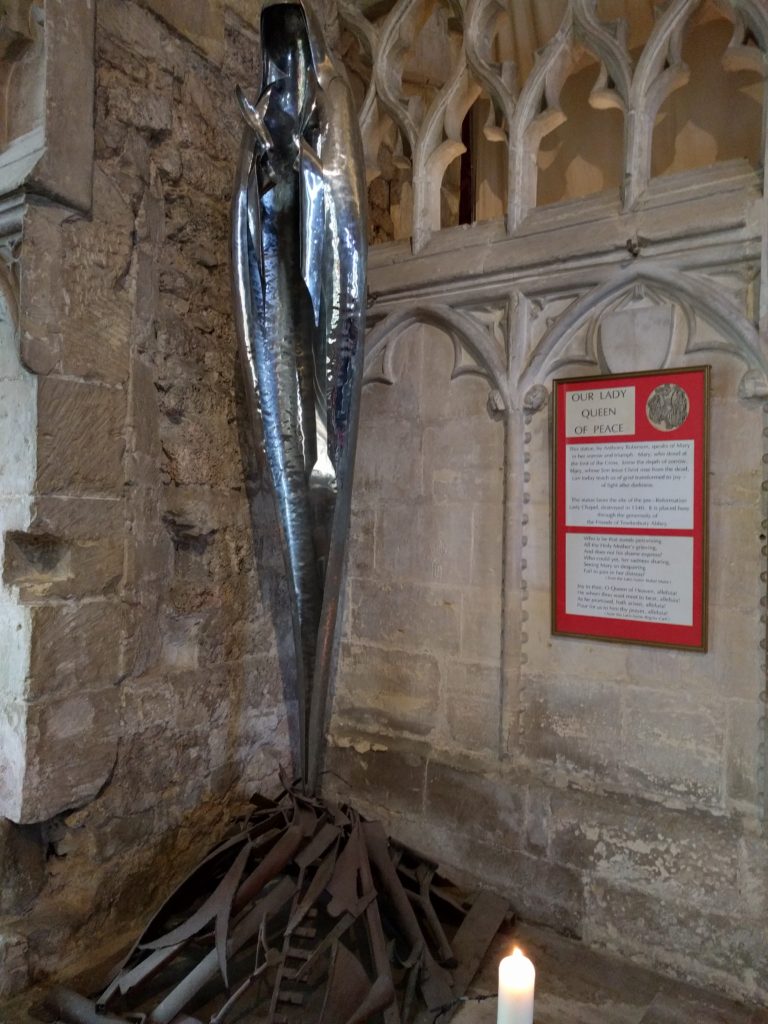
But not everything in the Abbey is ancient. I was struck by Anthony Robinson’s very modern sculpture of Our Lady Queen of Peace in the ambulatory near the site of the former Lady Chapel.
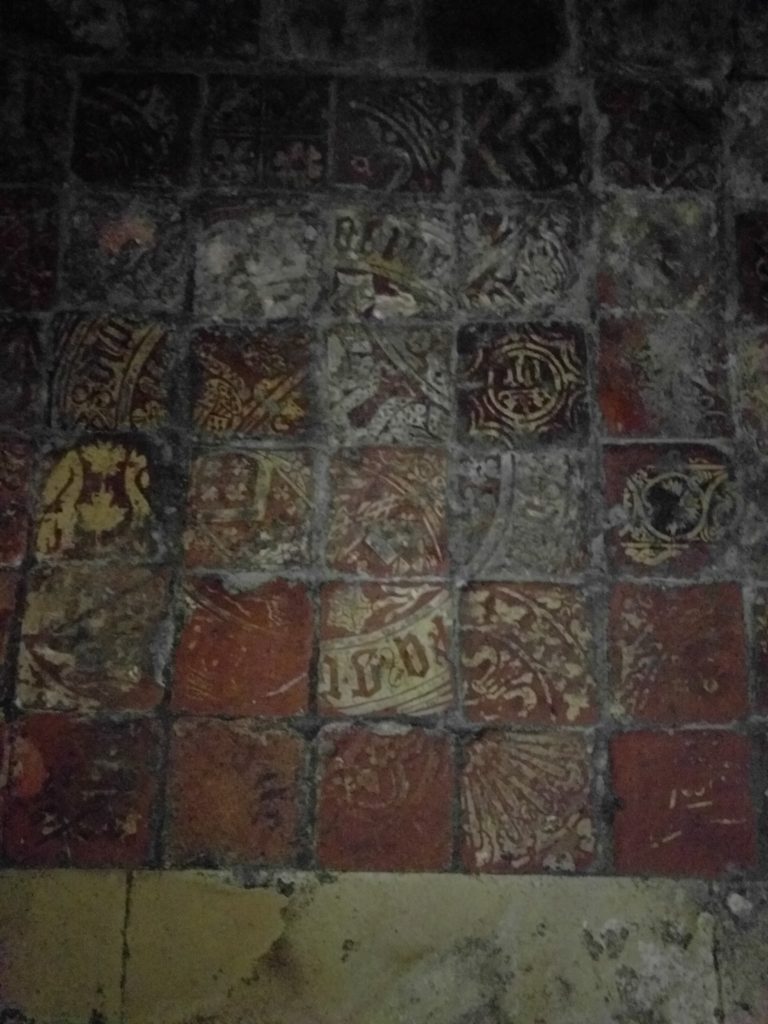
Medieval encaustic tiles 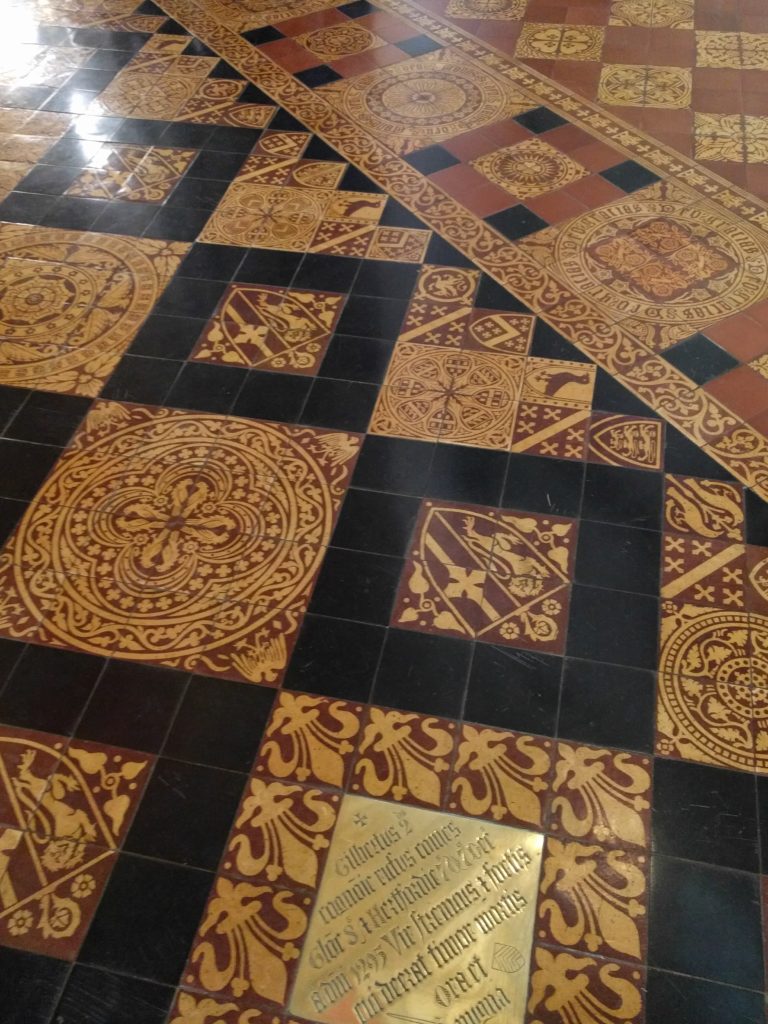
Victorian tiles
From the Abbey, and armed with a map from the local tourist office, itself housed in a wonderful half-timbered building, I followed a heritage trail round the town.
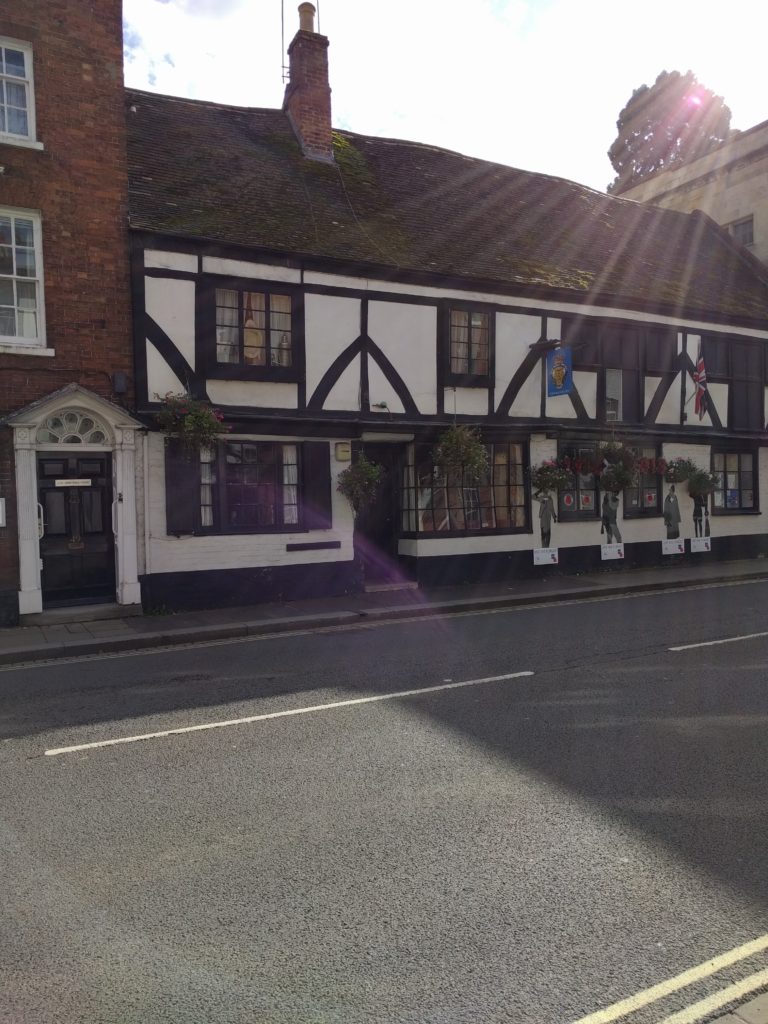
This took me past lots of coaching inns, including the Bell Hotel.

Nearby is a row of 15th century shops, with shutters that were lowered to act as counters.
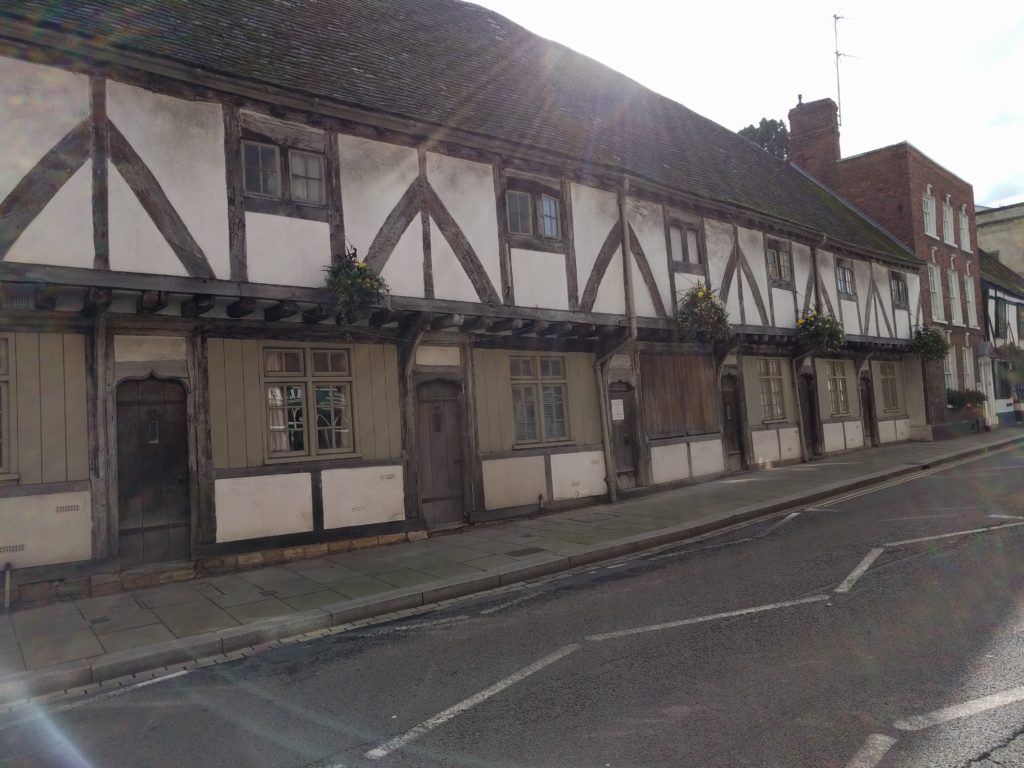
15th century Abbey Lawn Cottages were also shops 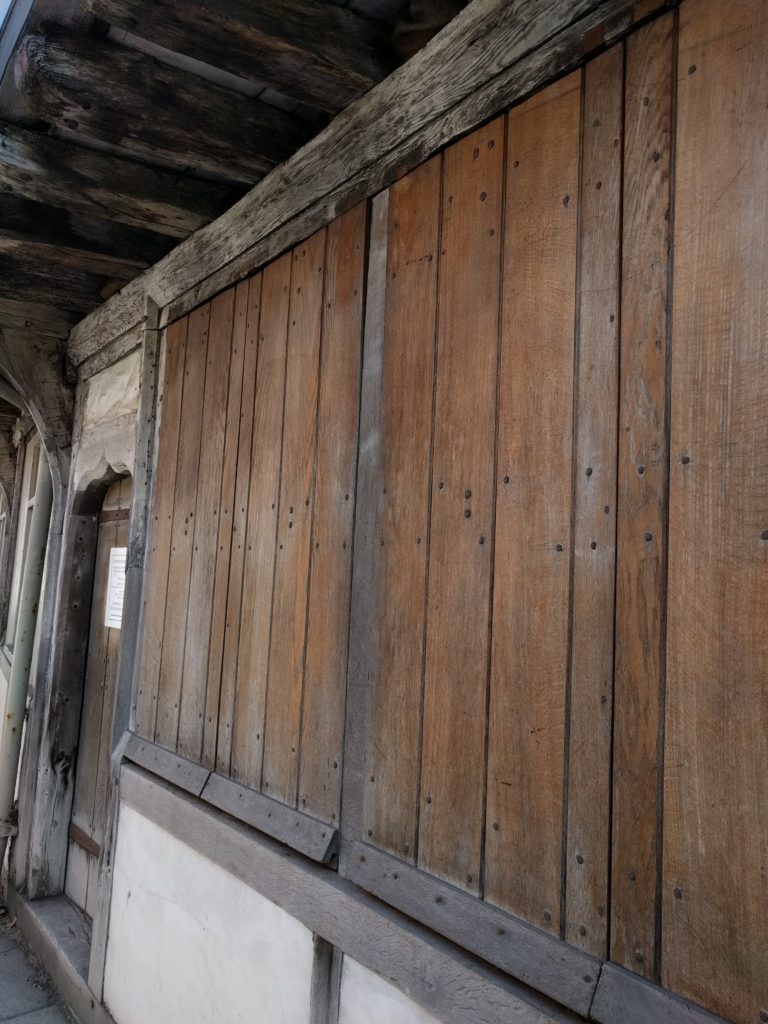
The shutters were lowered to act as counters
Abbey Mill’s foundations date back to the late 12th century, but the current building was erected in the late 18th century. Sadly the Ham, the water meadow that lies between the two rivers, was flooded, so I was unable to continue my walk along the river pathway.
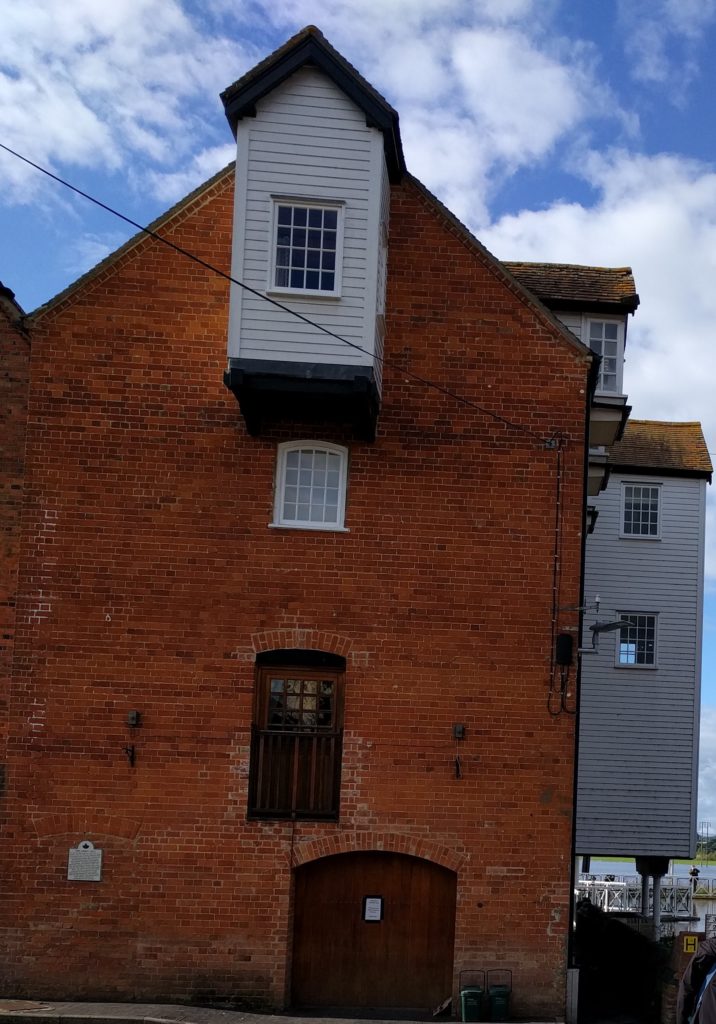
Abbey Mill 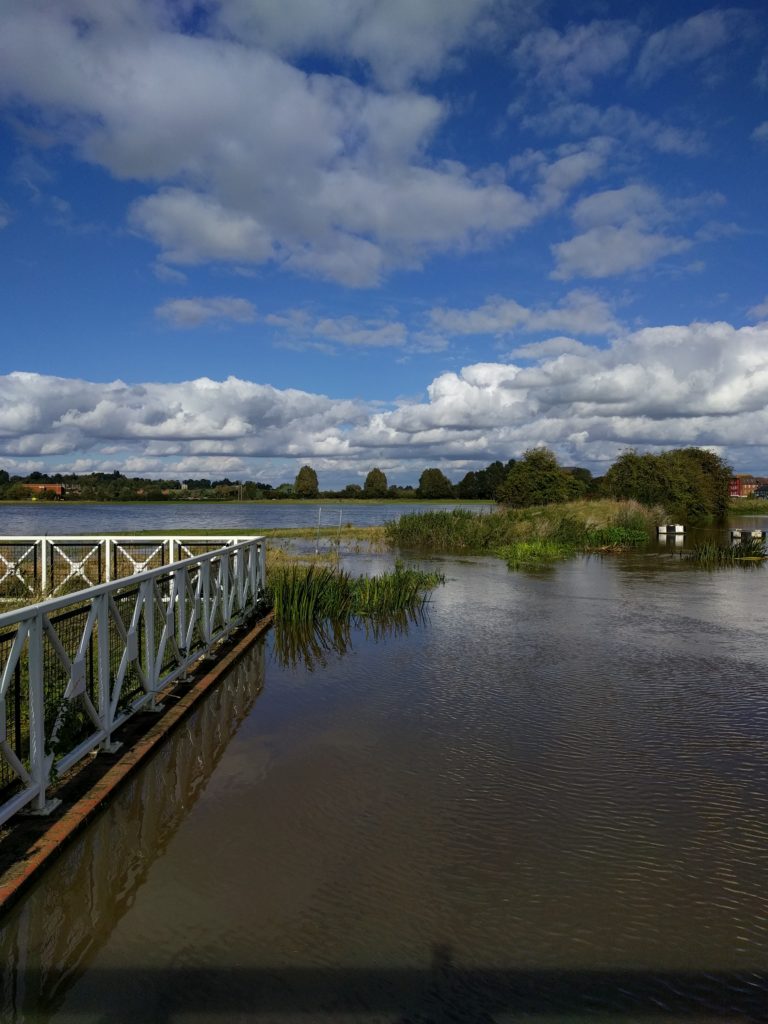
View over flooded water meadow 
View from bridge back to town
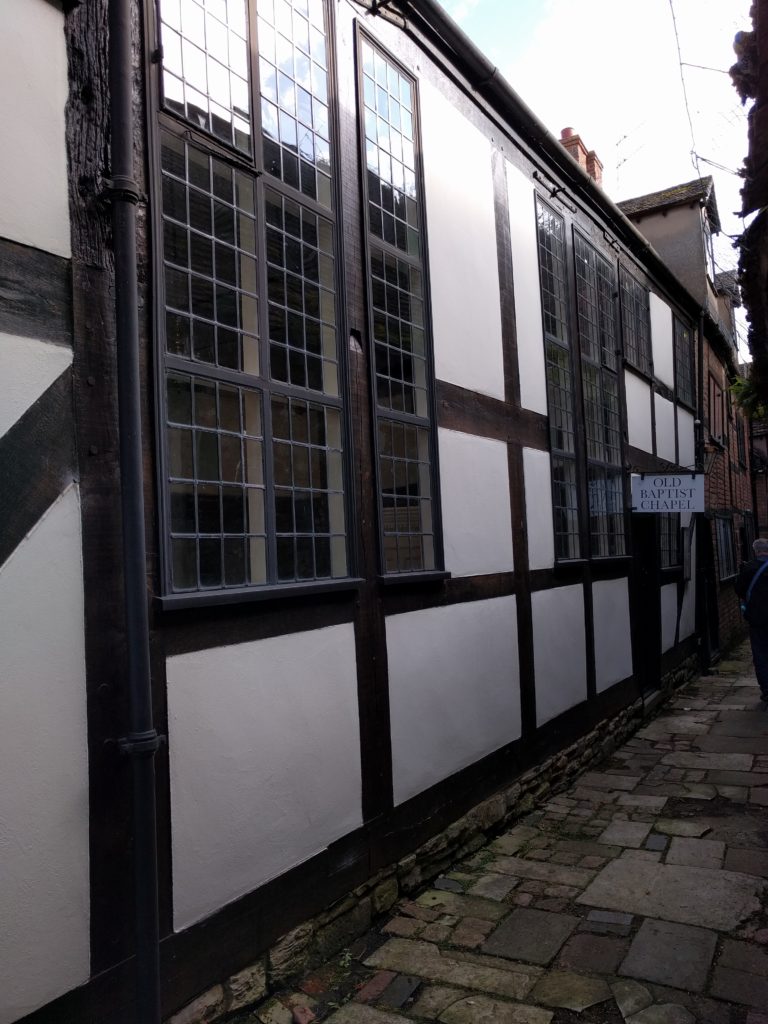
All too soon, it was time to return home, but I can truthfully say I enjoyed my trip to Tewkesbury. The Abbey exceeded my expectations, with its marvellous and intricate stonework, and impressive, soaring stone pillars, and I would definitely like to spend more time exploring the town.
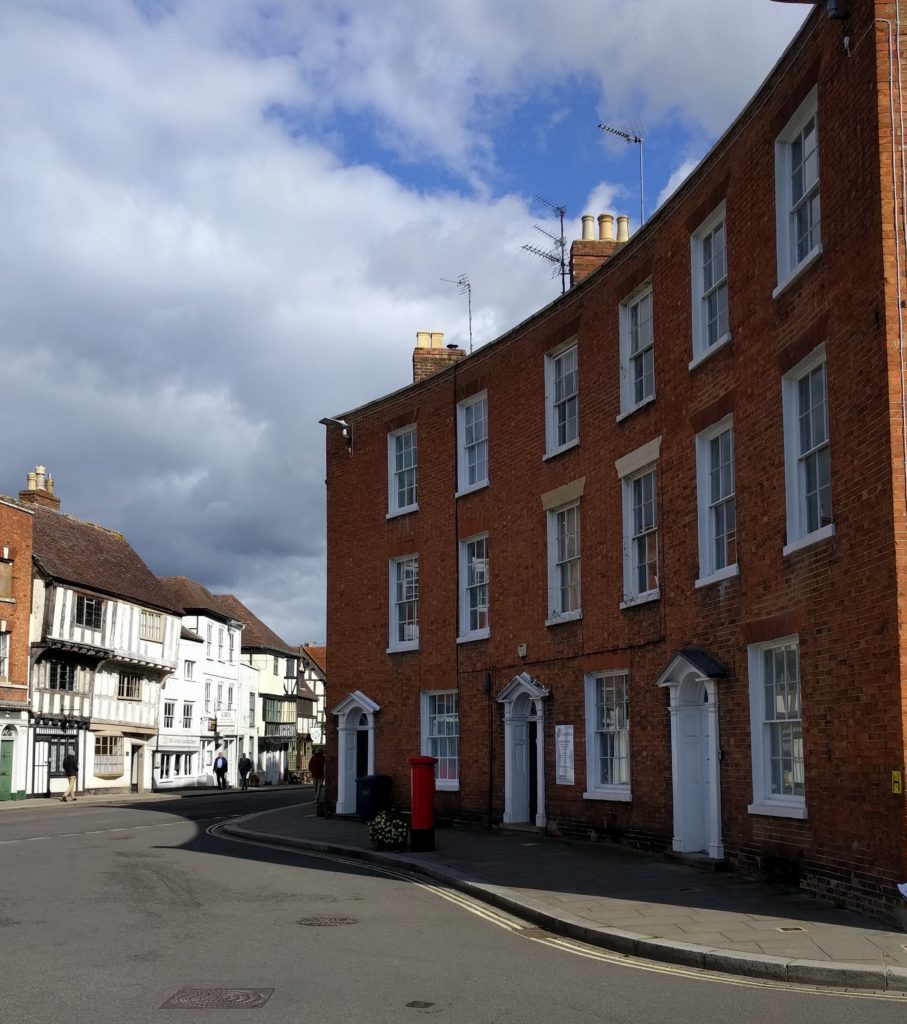
Curved Georgian terrace 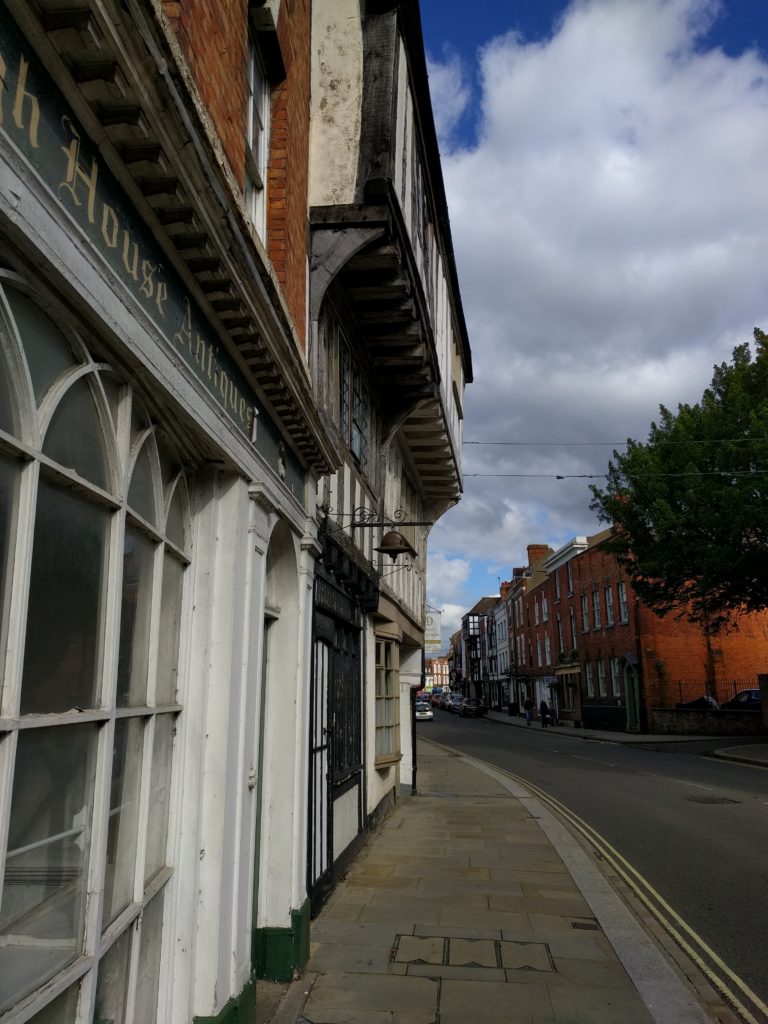
View up Church Street
There is a heritage trail for the 17th century alleyways that intersect the main streets, so I’d love to do that in the future.
If you know of anything else that is a ‘must see’ in Tewkesbury, do let me know.
